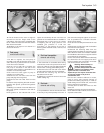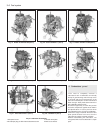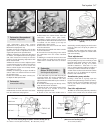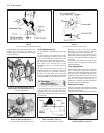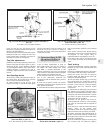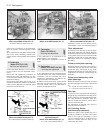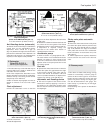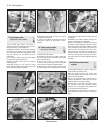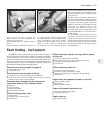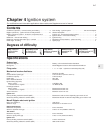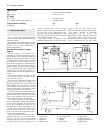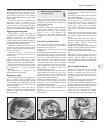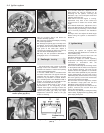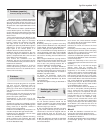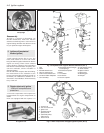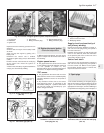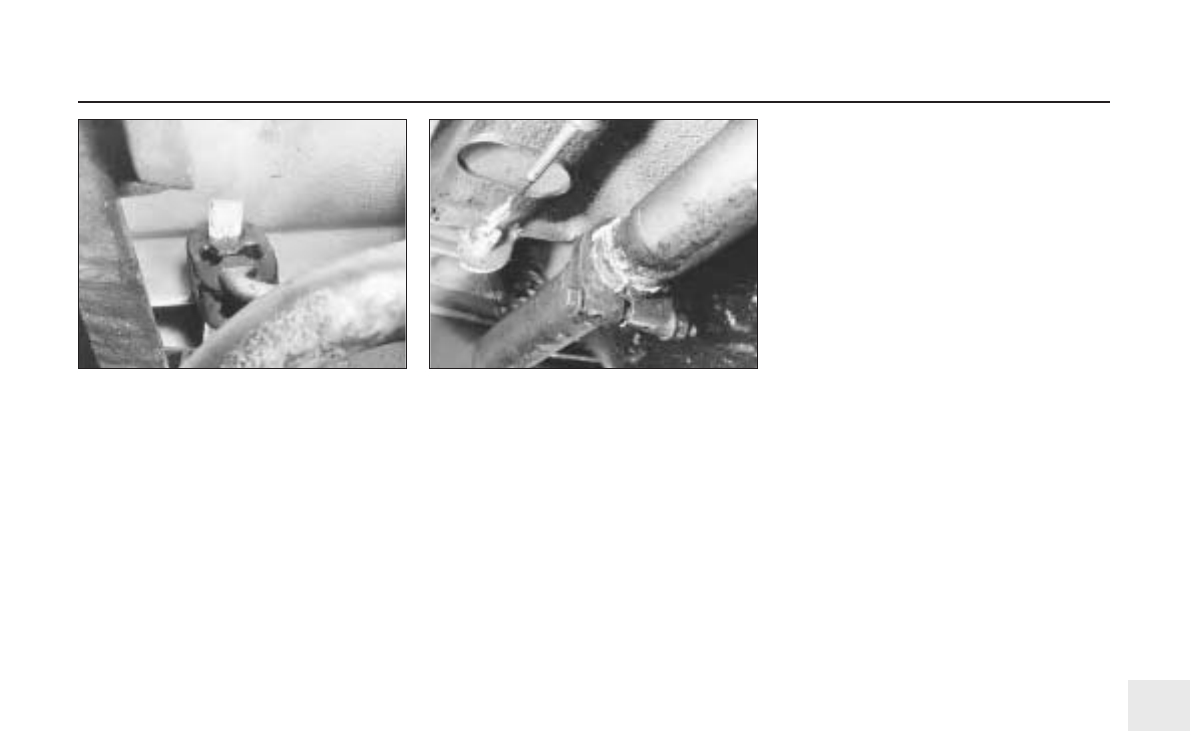
6 On 1116 cc and 1301 cc models, the
exhaust system is of dual downpipe, two
silencer, two section type.
7 The exhaust system is flexibly mounted
(photo).
8 Do not attempt to separate the sections of
the exhaust system, while in position in the
car. Unbolt the pipe from the manifold and,
using a screwdriver, prise off the flexible
suspension rings. Provided the car is then
raised on jacks, ramps or placed over
an inspection pit, the complete exhaust
system can be withdrawn from under the car.
9 If only one section is to be renewed, it is far
easier to separate once the complete system
is out of the car.
10 When refitting, grease the pipe sockets
and fit the clamps loosely until the suspension
rings are connected and the downpipe bolted
up (using a new copper gasket). Check the
attitude of the sections with regard to each
other and the adjacent parts of the
underbody. Fully tighten the clamps and
downpipe flange nuts, remembering to bend
up the lockplate tabs on 1116 cc and 1301 cc
models (photo).
11 On the larger engined models, it may be
necessary to raise the vehicle at the rear and
support it on axle stands so that the rear sus-
pension hangs down and is fully extended.
This will allow sufficient clearance between
the axle and the body for the exhaust system
to be withdrawn.
Fuel system 3•13
3
19.10 Exhaust pipe socket clamp19.7B Exhaust tailpipe mounting
Fault finding - fuel system
Unsatisfactory engine performance and excessive fuel consumption
are not necessarily the fault of the fuel system or carburettor. In fact they
more commonly occur as a result of ignition and timing faults. Before
acting on the following it is necessary to check the ignition system first.
Even though a fault may lie in the fuel system it will be difficult to trace
unless the ignition is correct. The faults below, therefore, assume that
this has been attended to first (where appropriate).
Smell of petrol when engine is stopped
ⅥⅥ Leaking fuel lines or unions
ⅥⅥ Leaking fuel tank
Smell of petrol when engine is idling
ⅥⅥ Leaking fuel line unions between pump and carburettor
ⅥⅥ Overflow of fuel from float chamber due to wrong level setting,
ineffective needle valve or punctured float
Excessive fuel consumption for reasons not
covered by leaks or float chamber faults
ⅥⅥ Worn jets
ⅥⅥ Over-rich setting
ⅥⅥ Sticking mechanism
ⅥⅥ Dirty air cleaner element
Difficult starting when cold
ⅥⅥ Choke control
ⅥⅥ Insufficient use of manual choke
ⅥⅥ Weak mixture
Difficult starting, uneven running, lack of power,
cutting out
ⅥⅥ One or more jets blocked or restricted
ⅥⅥ Float chamber fuel level too low or needle valve sticking
ⅥⅥ Fuel pump not delivering sufficient fuel
ⅥⅥ Induction leak
Difficult starting when hot
ⅥⅥ Excessive use of manual choke
ⅥⅥ Accelerator pedal pumped before starting
ⅥⅥ Vapour lock (especially in hot weather or at high altitude)
ⅥⅥ Rich mixture
Engine does not respond properly to throttle
ⅥⅥ Faulty accelerator pump
ⅥⅥ Blocked jet(s)
ⅥⅥ Slack in accelerator cable
Engine idle speed drops when hot
ⅥⅥ Incorrect air cleaner intake setting
ⅥⅥ Overheated fuel pump
Engine runs on
ⅥⅥ Idle speed too high



